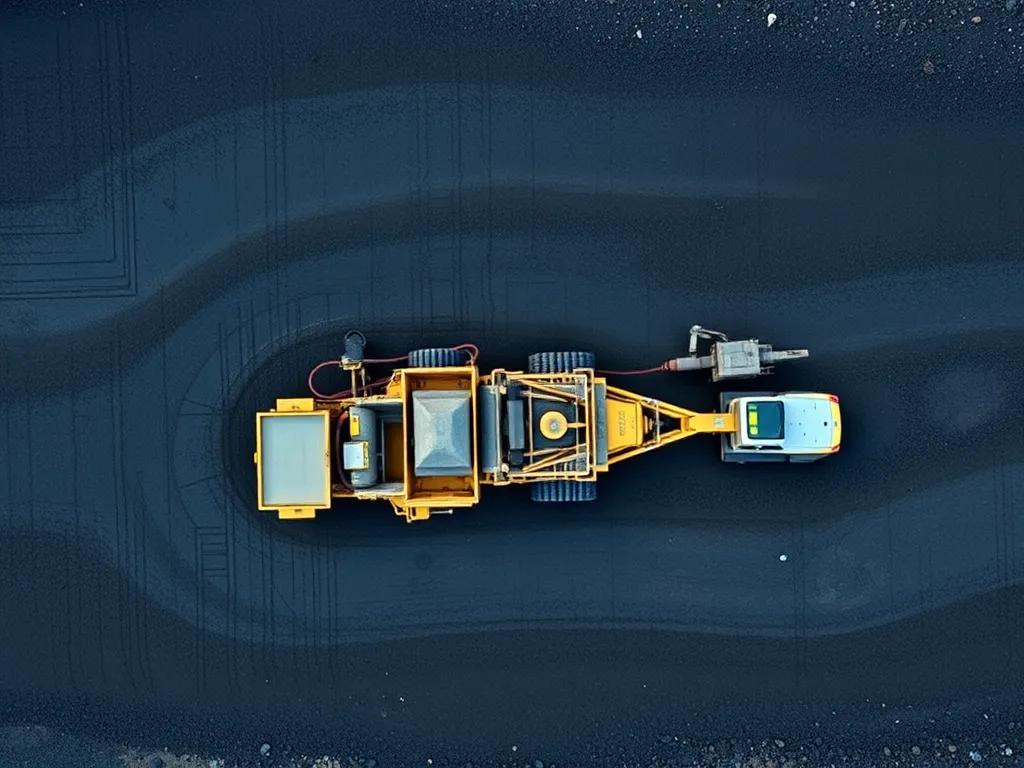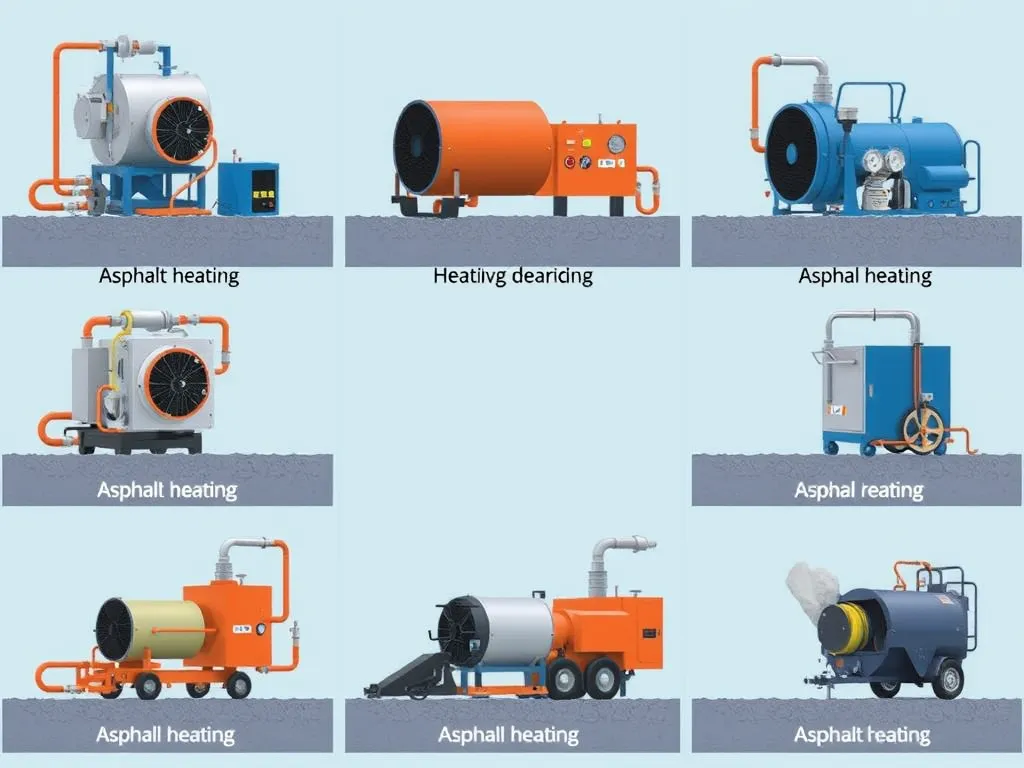Key Benefits Of Porous Asphalt: Advantages and Applications
Published on: August 23, 2025 | Last Updated: April 14, 2025
Written By: George Voss
Porous asphalt reduces flooding, improves water quality, and cools urban areas by letting stormwater drain through its 18-25% void space. Made with open-graded stone, sand, and bitumen, it looks like traditional asphalt but acts like a sponge. This eco-friendly pavement works for driveways, parking lots, and low-speed roads where drainage matters. Its design cuts runoff by up to 100% in small storms, filters pollutants, and lowers surface temperatures by 5-7°F compared to regular asphalt.
This article breaks down how porous asphalt outperforms traditional paving. You’ll learn how it manages stormwater without extra drains, lasts 15-20 years with proper care, and cuts road noise by 3-5 decibels. We’ll compare costs ($2-$5 per sq.ft. installed), explain why it melts ice faster, and show where it works best. Dive into maintenance tips, climate limitations, and real-world examples.
Contents
- What is Porous Asphalt?
- Environmental Benefits Of Porous Asphalt
- Functional Advantages Of Porous Asphalt
- Porous Asphalt Vs. Traditional Asphalt
- Cost and Durability Of Porous Asphalt
- Common Applications Of Porous Asphalt
- Disadvantages Of Porous Asphalt
- Maintaining Porous Asphalt Surfaces
- FAQs About Porous Asphalt
- Closing Thoughts
- Useful References for You:
What is Porous Asphalt?
Porous asphalt lets rain soak through its surface. It’s built to fight floods, cut heat, and clean water as it flows. Here’s how it works.
Definition and Make-up
Porous asphalt mixes big stones with asphalt cement. It leaves gaps (16-20% voids) for water to flow through. This mix skips small sand grains used in dense asphalt. The open grid lets rain seep into the ground below.
How Porous Asphalt Differs From Standard Asphalt
Normal asphalt packs small stones tight. It blocks water, causing puddles and floods. Porous asphalt uses a loose grid. Water drains fast—up to 5 gallons per square foot each minute. It needs a 12-36 inch stone bed under it to store water. This bed cuts flood risk and feeds soil slowly.
These traits set the stage for its role in cutting flood risks and urban heat—key points covered next.
Environmental Benefits Of Porous Asphalt
Porous asphalt pavement benefits ecosystems by merging infrastructure with natural processes. Its design tackles pressing urban challenges while supporting sustainable development goals.
Stormwater Management and Flood Reduction
Traditional pavements shed 90-95% of stormwater. Porous asphalt cuts runoff by 50-70% through interconnected voids in its structure. These voids let water seep into underlying soil or storage basins.
How It Minimizes Runoff and Flood Risks
Every square foot of porous asphalt concrete can drain 3-5 gallons per minute. By diverting water from overloaded storm drains, it lowers flood risks during heavy rains. Projects in cities like Philadelphia reduced peak runoff rates by 63% post-installation.
Reduction Of Urban Heat Island Effect
Dark pavements absorb up to 95% of solar radiation, raising surface temps by 20-40°F. Porous asphalt’s lighter color reflects more light, while its voids store moisture for evaporative cooling. Studies show it lowers pavement temps by 5-14°F compared to dense mixes.
Improved Water Quality and Pollution Control
Runoff from standard roads carries oil, metals, and sediment into streams. Porous asphalt pavement acts as a filter, trapping up to 80% of suspended solids. This protects aquatic life downstream.
Filtering Contaminants from Stormwater
Layers within the system – including choker courses and geotextiles – capture pollutants through physical straining and microbial breakdown. Testing reveals reductions of 45-85% for heavy metals like zinc and copper. Hydrocarbons degrade naturally in the oxygen-rich base layer.
Beyond ecological gains, porous asphalt benefits drivers through enhanced safety features. Let’s explore how its functional perks boost performance in daily use.
Functional Advantages Of Porous Asphalt
Beyond environmental perks, porous asphalt delivers performance upgrades that improve usability in daily scenarios. Its unique structure solves common issues faced by traditional pavements.
Enhanced Skid Resistance and Safety
The open-graded texture of porous asphalt boosts surface friction by up to 45% compared to dense-graded mixes. Water drains through its 16-22% void space, reducing hydroplaning risks during storms. This design meets FHWA skid resistance standards for high-risk zones like curves or intersections.
Noise Reduction for Quieter Surfaces
Porous asphalt cuts traffic noise by 3-5 decibels—equivalent to doubling the distance from the source. Sound waves dissipate within the pavement’s air pockets instead of reflecting off the surface. Ideal for urban zones with strict noise ordinances or near schools.
Efficient Snow and Ice Melting Properties
Drained water prevents ice formation, while the voids store residual heat from underlying soil. Tests show porous surfaces clear winter precipitation 30% faster than solid pavements. Less salt is needed—up to 70% reduction in deicing chemicals—lowering maintenance costs.
| Feature | Porous Asphalt | Traditional Asphalt |
|---|---|---|
| Ice Formation Time | 2-4 hours | 6-8 hours |
| Deicing Salt Use | 0.2 lbs/sq yd | 0.7 lbs/sq yd |
| Post-Storm Drying | 15-30 minutes | 2+ hours |
These functional benefits position porous asphalt as more than just eco-friendly pavement. Up next, we’ll compare its technical specs against traditional mixes.
Also See: Exploring Recent Asphalt Safety Research
Porous Asphalt Vs. Traditional Asphalt
While both materials share asphalt binder and aggregates, their design goals diverge sharply. Porous asphalt prioritizes water drainage and environmental impact, while traditional asphalt focuses on maximizing density for heavy loads.
Key Structural and Performance Differences
Traditional asphalt mixes pack 95-97% stone aggregates with fine sands, leaving just 3-5% air voids. Porous asphalt uses open-graded designs with 16-20% voids – achieved by eliminating fines and using uniform ½” crushed stone. Polymer-modified PG 76-22 binders lock aggregates in place while maintaining permeability.
This gap-graded structure lets porous asphalt drain 3-5 gallons of stormwater per square foot annually. Traditional pavements pool water, increasing hydroplaning risks. Porous surfaces also reduce tire noise by 3-5 decibels through sound-dampening air pockets. Winter performance diverges too: porous asphalt’s voids allow quicker snow melt drainage, while traditional surfaces ice over faster.
Permeable Asphalt Vs. Porous Asphalt: A Comparison
Though often used interchangeably, these terms describe distinct systems. Porous asphalt refers specifically to the surface layer with high-void mixes. Permeable asphalt pavement systems add subsurface stone reservoirs (12-36” depth) and geotextile fabrics for maximum water storage – handling 70-100% of annual rainfall in ideal setups.
For parking lots, porous asphalt alone reduces runoff by 50-70% at $2.50-$4.50 per square foot installed. Full permeable systems cost $6-$10 per square foot but handle heavier storms. Driveways and sidewalks often use standalone porous layers, while commercial sites combine porous surfaces with underground storage for peak flow control.
Up next: How these structural choices impact installation budgets and surface longevity over 15-25 year lifespans.
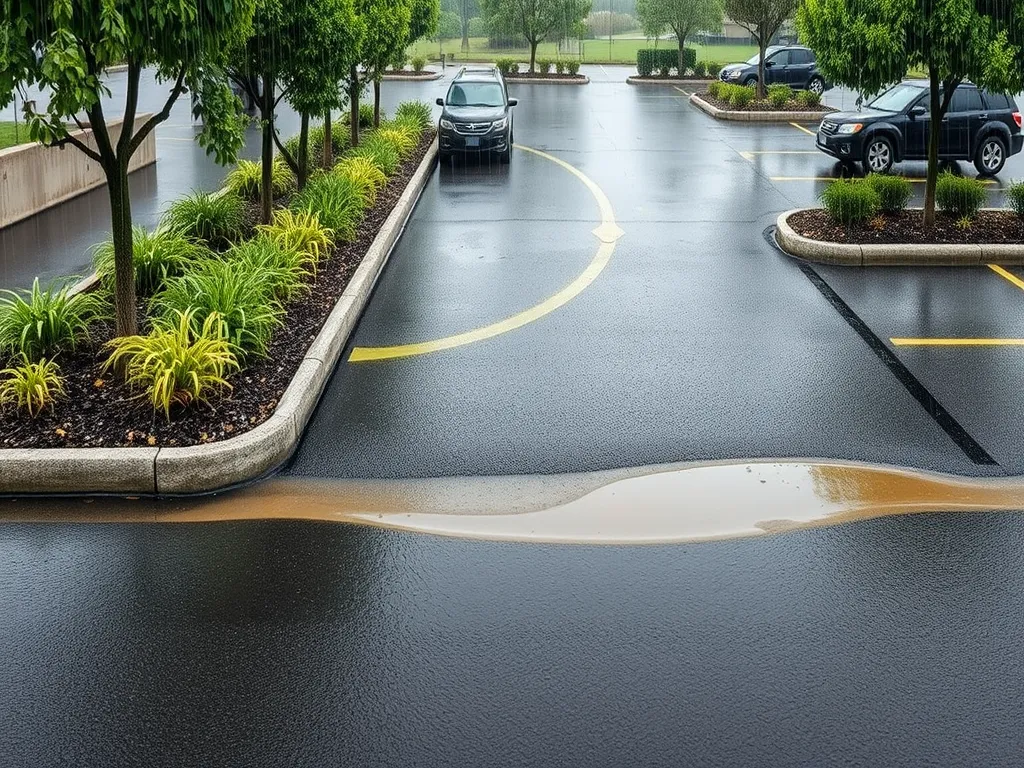
Cost and Durability Of Porous Asphalt
Porous asphalt balances upfront expenses with lasting value. While installation costs exceed traditional pavement, its environmental perks and reduced infrastructure needs create financial benefits over time.
Initial Installation Costs and Long-term Savings
Installation costs for porous asphalt typically run 15-30% higher than traditional pavement. Specialized materials like polymer-modified PG binders and deeper aggregate layers drive this increase. Long-term savings offset the premium: porous systems eliminate costly storm drains, reduce retention pond needs, and lower maintenance by 40-60% compared to impermeable surfaces. Municipalities may qualify for stormwater fee credits up to 50% in areas like New Jersey or Maryland. Developers save $3-$7 per square foot in drainage costs for parking lots.
Lifespan and Factors Affecting Longevity
Properly maintained porous asphalt lasts 20+ years—matching or exceeding traditional asphalt’s 15-20 year range. Freeze-thaw durability stems from its 16-22% void space, which lets water expand harmlessly. Three factors impact lifespan: sediment buildup (blocking pores), traffic loads (max 12,000 ESALs/year), and cleaning frequency. Annual vacuum sweeping preserves permeability, while neglect can shorten service life by 50%. In snowy climates, avoid sand de-icers—they clog pores faster than liquid alternatives.
Combining cost efficiency with robust performance, porous asphalt proves its worth beyond environmental merits. Next, let’s examine where these traits shine brightest in real-world applications.
Common Applications Of Porous Asphalt
Porous asphalt works in many spots where stormwater control and strong surfacing mix. Its design suits both daily use and niche projects, giving flexibility across urban and suburban settings.
Porous Asphalt Driveways
Homeowners pick porous asphalt driveways to stop puddles and cut runoff. This surfacing lets water drain at 300-600 inches per hour, stopping ice buildup in cold months. Installation costs run $3-$5 per square foot, but savings come from skipping curbs or drains. A 12-inch stone base under the asphalt boosts stability, lasting 15-20 years with vacuum sweeping twice yearly.
Parking Lots and Low-traffic Roads
Parking zones with porous asphalt handle 80-90% of rainfall onsite, slashing flood risks. Open-graded mixes (19% air voids) give skid resistance above 45 BPN, vital for stop-and-go traffic. Cities use it for alleys or access roads, pairing with bioswales for full stormwater systems. Annual pressure washing keeps voids clear, maintaining 95% permeability over a decade.
Sidewalks and Recreational Pathways
Parks and campuses install porous asphalt sidewalks to cool surfaces by 5-7°F versus traditional paving. Its texture cuts slip hazards, scoring 70+ on the Dynamic Friction Index. Bike trails use 2-inch thick layers with PG 64-22 binder, balancing flexibility and load spread. Routine leaf blowing stops clogs, saving $0.50 per square foot in upkeep yearly.
From driveways to park trails, porous asphalt adapts to many needs. But its performance hinges on proper planning—factors like soil type and traffic shape results. Next, let’s look at situations where this material might not fit your project.
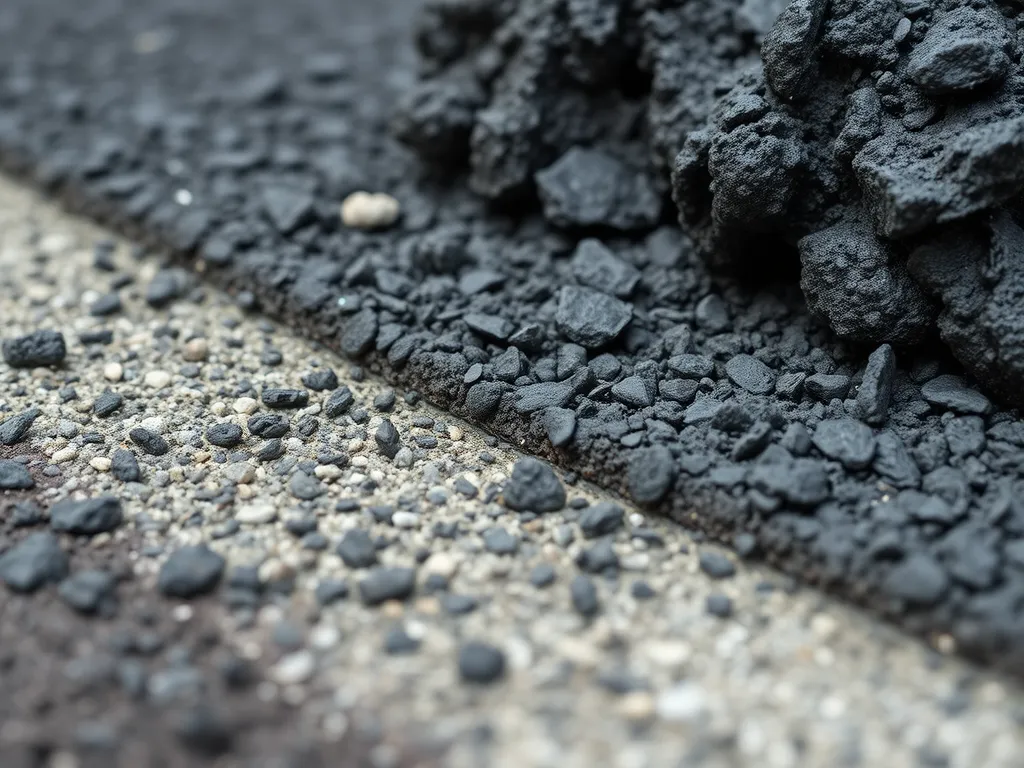
Disadvantages Of Porous Asphalt
While porous asphalt benefits include stormwater control, quieter surfaces, and eco-friendly performance, specific limitations require consideration. Property owners must weigh these factors against project needs.
Maintenance Challenges
Porous asphalt pavement demands more frequent upkeep than traditional surfaces. Sediment buildup in void spaces – designed to hold 15-25% of its volume in water – reduces drainage efficiency over time. Specialized vacuum sweeping every 3-6 months prevents clogs from leaves, sand, or road grit. Without this care, permeability rates drop by up to 40% within five years, based on Federal Highway Administration studies.
Limitations in High-traffic Areas
The open-graded structure making porous asphalt concrete effective for drainage also limits its load-bearing capacity. Heavy vehicles like semi-trucks or buses compact the surface, collapsing void spaces critical for water storage. Most engineers restrict its use to roads with under 750 vehicles per day or parking lots without constant commercial traffic. Mix designs using polymer-modified binders (e.g., PG 76-22) improve durability but raise material costs by 20-30%.
Proper upkeep strategies counter these drawbacks, ensuring porous asphalt pavement benefits last decades. Next, let’s explore methods to preserve its performance through targeted maintenance practices.
Maintaining Porous Asphalt Surfaces
Proper care ensures porous asphalt retains its permeability and structural benefits. Regular upkeep prevents clogs, extends lifespan, and sustains stormwater management capabilities.
Routine Cleaning and Debris Removal
Vacuum sweeping every 3-6 months keeps pores clear of sediment and leaves. Power washing at 1,200-1,500 PSI removes stuck particles without damaging the asphalt binder. Avoid sealcoating—it blocks pores and negates drainage benefits. Neglected surfaces lose up to 80% permeability within 5 years, turning them into standard pavement.
- Use regenerative air sweepers for deep cleaning
- Clear snow with rubber-bladed plows (set 1″ above surface)
- Inspect catch basins monthly during fall
Repair Techniques for Optimal Performance
Address cracks over ¼ inch quickly using polymer-modified asphalt emulsion. For potholes, excavate damaged areas and compact fresh porous mix at 270°F. Full-depth repairs require removing 4-6 inches of base layers—use open-graded aggregate to restore drainage. Annual infrared patching blends seams and maintains surface uniformity.
- Permeability tests: Aim for 150-300 inches/hour flow rate
- Edge restraints prevent unraveling on porous asphalt driveways
- Reservoir layer inspections every 3 years detect settling
Proactive care maximizes porous asphalt pavement advantages, from flood reduction to noise control. For property owners weighing long-term value, these practices answer common questions about durability and cost-effectiveness.
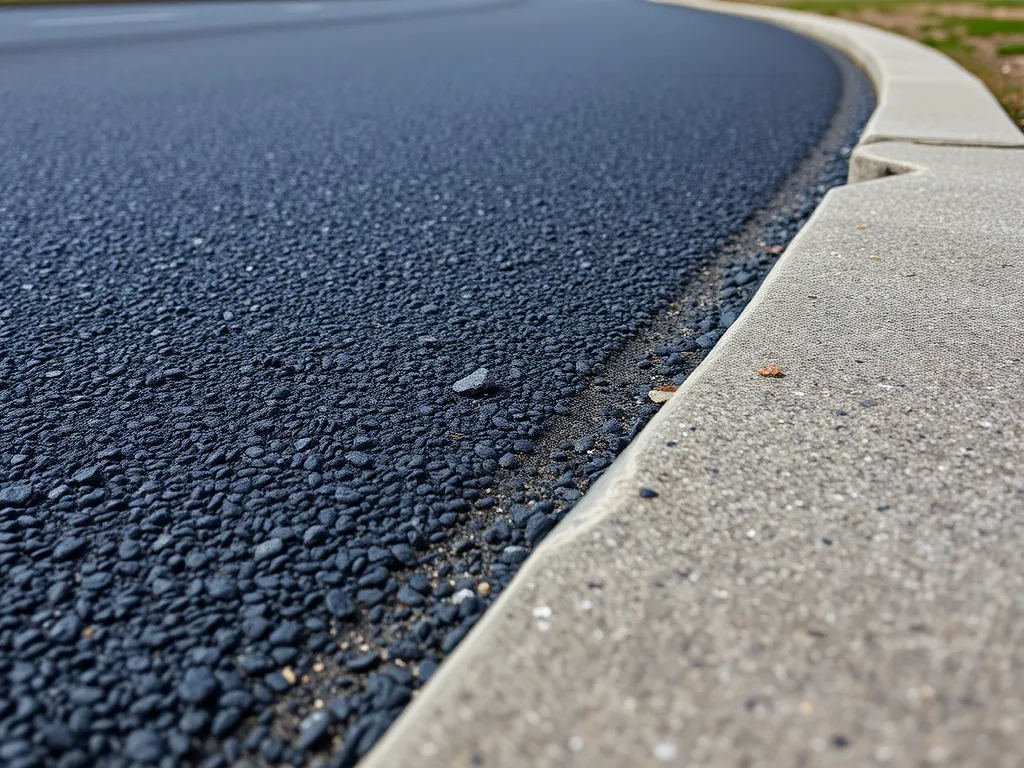
FAQs About Porous Asphalt
How Long Does Porous Asphalt Last Compared to Regular Asphalt?
Porous asphalt typically lasts 20 years or more with proper maintenance, which matches or even exceeds the lifespan of traditional asphalt, which generally lasts around 15-20 years. Factors such as sediment buildup and heavy traffic can affect durability, making regular upkeep crucial for optimal performance.
Is Porous Asphalt More Expensive to Install?
Yes, the initial installation cost for porous asphalt is usually 15-30% higher than that of traditional asphalt due to the specialized materials and construction techniques required. However, the long-term savings in reduced stormwater management costs and lower maintenance expenses can offset this upfront investment.
What Are the Primary Disadvantages Of Porous Asphalt?
Primary disadvantages include maintenance challenges, as porous asphalt requires regular vacuum sweeping to prevent sediment buildup, which can impede drainage. Additionally, it has limitations in high-traffic areas, as heavy vehicles can compact the surface and compromise its drainage capacity.
Can Porous Asphalt Be Used in Cold Climates?
Yes, porous asphalt can be used in cold climates, but careful consideration of snow and ice management is necessary. It can effectively drain melted snow, preventing ice formation, but it’s essential to use the right de-icing methods to avoid clogging the voids in the pavement.
Are There Specific Regulations Regarding Porous Asphalt Installation?
Yes, regulations may vary by locality, especially concerning stormwater management and drainage system requirements. It is advisable to check with local authorities and zoning regulations to ensure compliance and to determine if any permits are necessary for installation.
How Does Porous Asphalt Help Reduce Pollution?
Porous asphalt works as a natural filter, capturing pollutants through its structure. The voids help trap oil, metals, and sediments, significantly reducing the amount of contaminated runoff entering nearby water bodies, which helps protect aquatic ecosystems and improve overall water quality.
Is There a Risk Of Surface Damage to Porous Asphalt?
Porous asphalt can be susceptible to damage from heavy traffic or improper maintenance practices. It is vital to avoid using heavy machinery or de-icing salts that may clog the pores or degrade the asphalt binder. Regular inspections and proper repair techniques are essential to maintain its integrity.
Closing Thoughts
Porous asphalt stands out for its unique qualities and myriad advantages. Not only does it manage stormwater effectively, thereby reducing flood risks, but it also helps cool urban environments and enhance water quality by filtering pollutants. The safety benefits through improved skid resistance and noise reduction cannot be overlooked, making it ideal for a variety of applications, from driveways to parking lots.
While maintenance and performance in high-traffic areas can pose challenges, the long-term cost savings and durability make porous asphalt a compelling option for property owners. Understanding these benefits can lead to better decisions when choosing paving materials for both residential and commercial projects.
For more information about porous asphalt and to explore a range of asphalt solutions, visit Asphalt Calculator USA.

